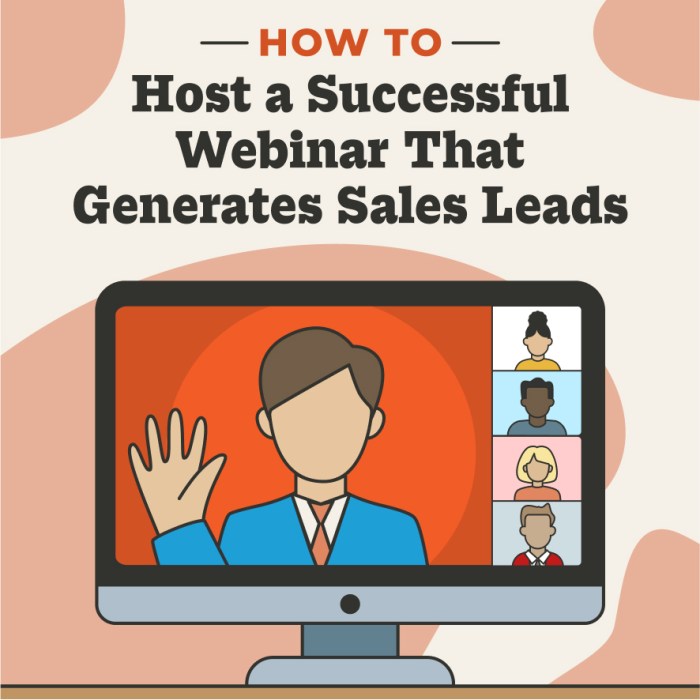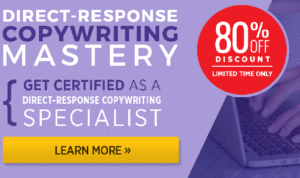Creating Webinars for Leads sets the stage for a dynamic exploration into the world of lead generation, offering insights and tactics that promise to revolutionize your marketing approach.
From defining webinars to converting attendees into valuable leads, this comprehensive guide covers all aspects of leveraging webinars for business growth.
Introduction to Webinars for Lead Generation

Webinars are online seminars or presentations that allow businesses to engage with potential leads in a virtual setting. They can be used as a powerful tool for lead generation by providing valuable content, showcasing expertise, and building relationships with prospects.
Benefits of Using Webinars for Lead Generation
- Webinars allow businesses to reach a large audience of potential leads from different locations.
- Interactive features such as Q&A sessions and polls can help in engaging participants and capturing their contact information.
- Webinars provide an opportunity to demonstrate products or services, educate the audience, and establish credibility in the industry.
Statistics on the Effectiveness of Webinars in Lead Generation
According to a study by InsideSales.com, businesses that use webinars experience a 30% increase in qualified leads.
Another research by the Content Marketing Institute found that 58% of marketers consider webinars as one of the most effective content marketing tactics.
Planning a Webinar for Lead Generation

When it comes to planning a webinar for lead generation, setting clear goals is crucial. Without clear objectives, it’s challenging to measure the success of the webinar and its impact on generating leads.
Choosing a Topic
To start planning a webinar, the first step is to choose a topic that is relevant to your target audience and aligns with your business goals. The topic should be engaging, informative, and provide value to the attendees.
Selecting Speakers
Selecting the right speakers for your webinar is essential for attracting attendees and generating leads. Choose speakers who are knowledgeable about the topic, engaging presenters, and experts in their field. Their expertise will help establish credibility and attract a larger audience.
Setting a Date
When setting a date for your webinar, consider the availability of your target audience and choose a time that is convenient for them. Avoid scheduling the webinar during busy times or conflicting with other events to maximize attendance.
Promoting the Webinar
Promoting the webinar is key to attracting attendees and generating leads. Use various marketing channels such as social media, email campaigns, and website promotions to reach a wider audience. Create compelling content and visuals to grab attention and entice people to register for the webinar.
Designing Engaging Webinars
When it comes to creating engaging webinars, it’s essential to focus on providing valuable content that resonates with your audience. Here are some tips to help you design compelling webinars that keep participants hooked from start to finish.
Creating Compelling Content
To create compelling content for your webinar, start by understanding your target audience and their pain points. Tailor your content to address these specific needs and provide actionable solutions. Use storytelling techniques to make your content relatable and engaging, keeping the audience invested in the discussion.
- Focus on delivering valuable insights and actionable tips
- Use real-life examples and case studies to illustrate key points
- Keep the content concise and to the point to maintain audience interest
Importance of Interactive Elements
Interactive elements like polls, Q&A sessions, and live chat can significantly enhance participant engagement during webinars. These features allow attendees to actively participate in the discussion, making the session more dynamic and interactive.
- Use polls to gather feedback and opinions from the audience
- Encourage questions through Q&A sessions to foster engagement
- Enable live chat for real-time interactions and discussions
Best Practices for Keeping Participants Engaged, Creating Webinars for Leads
To keep participants engaged throughout the webinar, consider the following best practices:
- Start with a captivating introduction to grab the audience’s attention
- Break down the content into digestible segments to maintain interest
- Include interactive elements at strategic points to keep participants engaged
- Encourage audience participation and feedback throughout the session
- Conclude with a strong call to action to drive further engagement
Converting Webinar Attendees into Leads: Creating Webinars For Leads
When it comes to converting webinar attendees into leads, it’s crucial to have a solid strategy in place to capture their information during the webinar and follow up with them afterwards. This process is essential for nurturing leads and turning them into potential customers.
Capturing Attendee Information
- Utilize registration forms: Require attendees to fill out a registration form before the webinar starts, collecting key information such as name, email, company, and job title.
- Interactive polls and surveys: Incorporate live polls and surveys during the webinar to gather valuable data about attendees’ preferences, challenges, and interests.
- Q&A sessions: Encourage attendees to ask questions throughout the webinar, allowing you to engage with them directly and potentially capture additional information.
Following Up with Attendees
- Send personalized thank you emails: Immediately after the webinar, send a personalized thank you email to attendees, including a recap of key points discussed and next steps.
- Provide valuable content: Follow up with attendees by sharing relevant content, such as whitepapers, case studies, or blog posts, to continue nurturing the relationship.
- Schedule one-on-one meetings: Offer attendees the opportunity to schedule one-on-one meetings to discuss their specific needs and how your product or service can address them.
Successful Lead Conversion Tactics
- Offer exclusive discounts or promotions: Provide webinar attendees with special discounts or promotions to incentivize them to take the next step in the buyer’s journey.
- Host post-webinar workshops or demos: Organize follow-up workshops or product demos to give attendees a deeper understanding of your offerings and how they can benefit from them.
- Implement a lead scoring system: Assign scores to webinar attendees based on their level of engagement and interest, allowing you to prioritize follow-up efforts with the most qualified leads.





